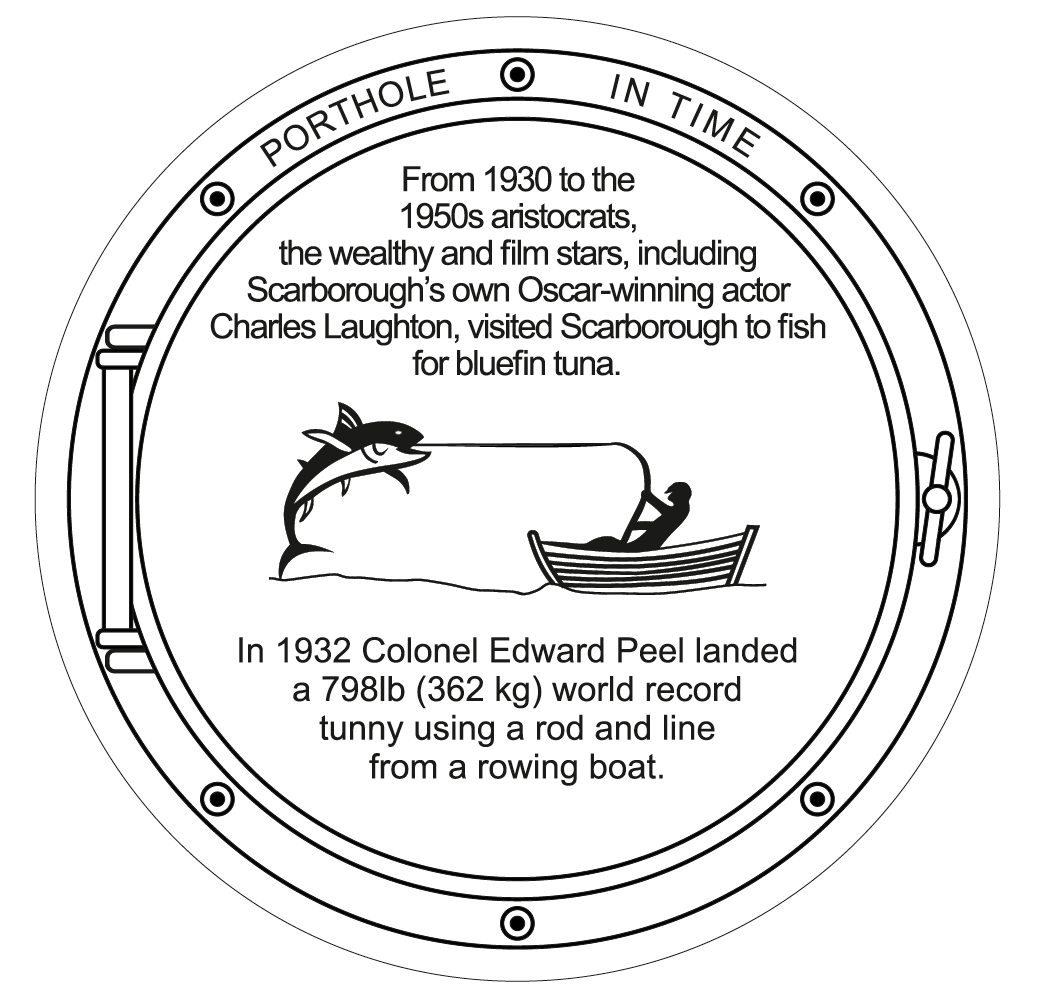
For about 20 years, between 1930 and 1950, Scarborough became associated with the sport of ‘tunny’ (tuna) fishing. Local fishermen had earlier spotted large creatures in the water while fishing for herring, many believing them to be sharks, but the first tunny, or Atlantic bluefin tuna, was caught in September 1929. Tunny fishing took off in Scarborough the next year when Lorenzo Mitchell Henry, who had learned the sport of tunny fishing in Canada and Denmark, brought in the first rod-caught tunny fish at Scarborough.
The majority of tunny were caught between 25 and 75 miles offshore, near the herring shoals in which they hunted, in a season between June and October. After reaching herring shoals, anglers usually switched to a smaller rowing boat to hook the fish, which would begin a long fight. Mr B. Clive Smith reported being towed 25 miles by a tunny for over six hours, before landing it. Tunny fishing quickly developed official rules and specialised tackle. The British Tunny Club was founded in Scarborough in 1933 and had its headquarters on East Sandgate.
Between 1933 and 1954, the Paul Latham Challenge Cup was awarded for the heaviest tunny caught that season, with the Ward Challenge Cup given for the heaviest tunny caught by a woman. Colonel E. T. Peel broke the world record in 1931 with a 362kg (798lb) tunny, seven miles from Scarborough. He became President of the British Tunny Club. Mitchell Henry topped this in 1933 with an 386kg (851lb) tunny, 2.67m (105 in) long with a 2.32m (80 in) circumference. This stands as the British record rod-and-line catch, according to some records. However, in 1949 a novice angler, John Hedley Lewis, caught an 386.5kg (852lb) tunny (weighing half a kilogram more than the 1933 catch), and this caused some controversy. Almost a year after the catch, Mitchell Henry contested the weight, stating it was weighed with a rope around its tail which weighed more than half a kilogram. Mitchell-Henry was ignoring the fact that the tunny had been suspended overnight allowing a lot of blood to drain from it, before the official weighing. After much debate both the British Tunny Club and the Guinness Book of Records stood by John Hedley Lewis’s catch as a world record. Surprisingly this was the first and last tunny Hedley Lewis ever caught.
Tunny fishing attracted a cast of wealthier and fashionable anglers - renting a keel-boat cost about £80 a week before the Second World War and visitors included the aviator Thomas Sopwith, Baron Henri de Rothschild and Walter Guinness. The sport was paused during World War II and, despite a short revival, declining catches and rising costs put an end to tunny fishing at Scarborough.